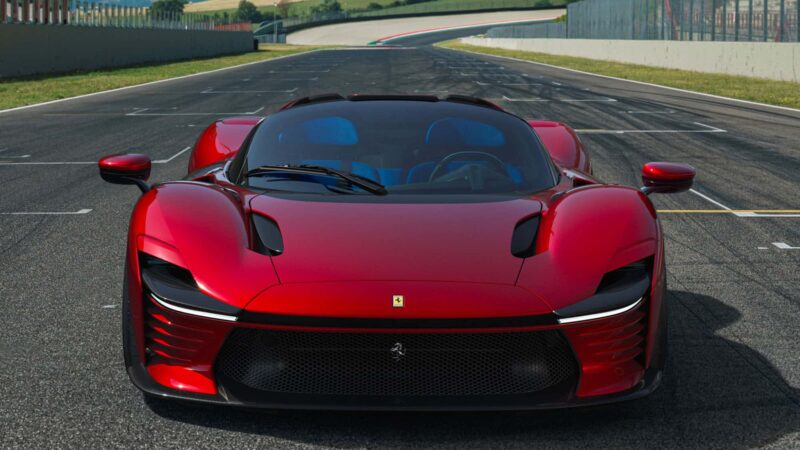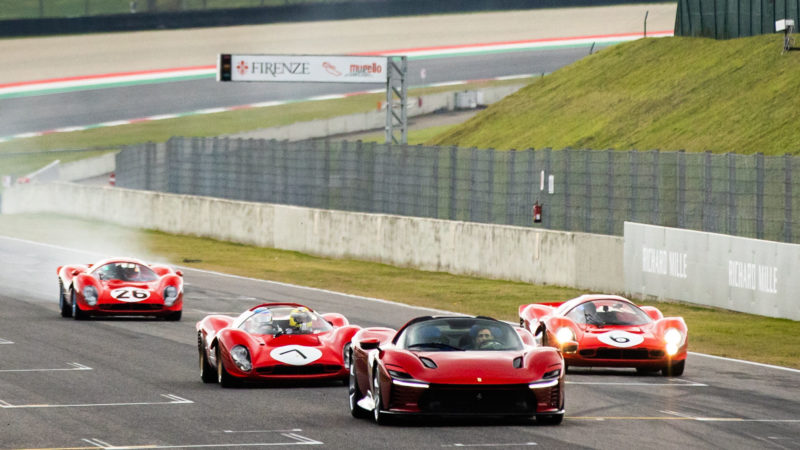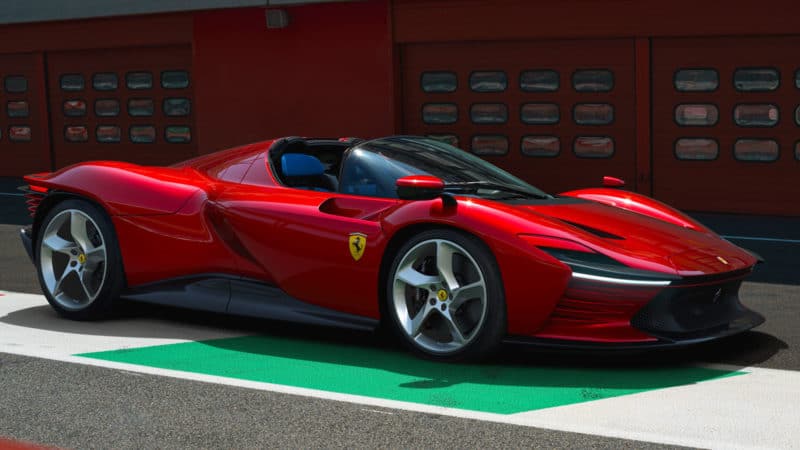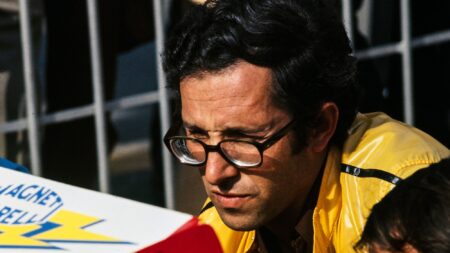The svelte passive aerodynamic lines are reimagined in a modern incarnation for the Daytona SP3, made with contemporary composite Formula 1 materials – previously utilised in Maranello’s last hypercar, the LaFerrari. According to Ferrari, this makes it the most aerodynamically efficient road car not to use active aerodynamics that the manufacturer has ever produced.
Various styling cues hark back directly to those classic prototypes – double-crested front wings recall the 512 S, 712 Can-Am and 312 P, whilst the surface treatment of the butterfly doors can be linked to the 512.
Wing mirrors which sit ahead of the doors and top of the wings is another late ’60s prototype calling card and two mini bumpers emerging from the outer edge of the headlights imitates the aero flicks of the 330 P4.
A minimalist interior also mimics the prototype cockpits, with adjustable pedals and a seat integral to the chassis to save weight and give the driver a similar position to that of a competition car.
The cockpit tapers and combines with the wings at the rear in an attempt to recall the 330 P4.

That power unit combined with lightweight F1 materials means the car can do 0-100kph (62mph) in 2.86sec.
Propelling the car forward is the most powerful engine ever made by Ferrari, the F140HC. The 6.5-litre V12 produces 830bhp and revs to 9,500 rpm, and when combined with the car’s lightweight materials and aerodynamics, will take the car from 0-100kph (60mph) in 2.85sec and 0-200kph (125mph) in 7.4sec. The gearbox is a seven-speed F1-style paddle shift with a dual clutch.
Each car from the production run of 599 examples will – quite predictably – not come cheap, priced at €2 million (£1.68 million) each.



